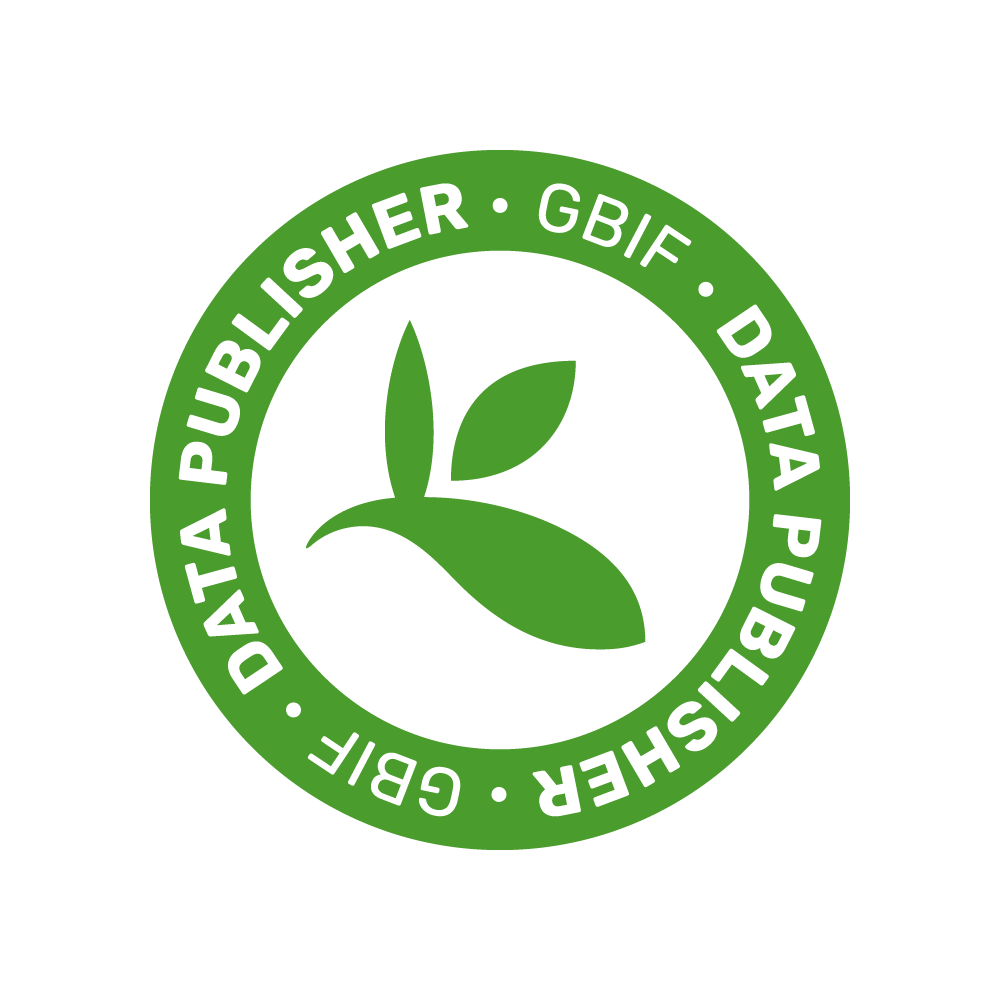Ennio Cocca
Role: Researcher
Section: Researchers and Technologists
Division: Naples
Tel: (39) 081-6132552-081-6132554
E-mail: ennio.cocca[at]cnr.it
URL: http://ibbr.cnr.it

Ennio Cocca
Role: Researcher
Section: Researchers and Technologists
Division: Naples
Tel: (39) 081-6132552
E-mail: ennio.cocca@ibbr.cnr.it
Address
Dr. Ennio Cocca
Researcher
Via P. Castellino 111, 80131 Naples ITALY
tel. +39 081 6132552 (direct); +39 081 6132554 (lab)
e-mail: ennio.cocca@ibbr.cnr.it
Research Interests
My research is focused on understanding the molecular mechanisms of adaptation and response to stress. My main study model is represented by the Antarctic fish, which inhabit the cold and richly oxygenated waters of the Southern Ocean. Among them, Channichthyids (icefish) are the only vertebrates which lack hemoglobin biosynthesis. Fish are particularly suited to studies of molecular evolution because the characterization of their genomes suggests that a substantial number of genes may be evolving faster than in other vertebrate lineages.
I have been recently involved in the study of transposable elements (TEs) in the genome of Notothenioids, the main group of Antarctic fish. TEs are now considered to play an important role in the mechanisms of genome evolution and adaptation. At present my studies regard the investigation of effects of changes in oxygen levels in regulating gene expression in Notothenioids and the expression analysis of genes involved in oxidative stress response in various systems.
Current projects and activity
APEH is a ubiquitous cytosolic protease that plays an important role in the detoxification of oxidized proteins. To explore the physiological role of this enzyme, in collaboration with colleagues from IBBR and ISA (CNR) we are characterizing the APEH system of two Antarctic fish species in comparison with that of a temperate fish. We are also interested in understanding how the APEH is coordinated to the proteasome complex.
Within the framework of a new PNRA project I am going to study the hypoxia and oxidative stress response in Antarctic fish by analysing the expression of genes that are regulated by the hypoxia-inducible factor (HIF). The model species will be kept at different oxygen concentrations, from normoxia to extreme hypoxia, in experiments that will be carried out at the Italian Antarctic station aquarium.
I have already participated to eight Antarctic expeditions, three of which at Palmer Station (USA), four at the Italian Station “Mario Zucchelli”, one on the NB Palmer Research Vessel (USA), sailing in the Atlantic sector of the sub-Antarctic Ocean.
Links
My investigations are in the framework of the Italian National Programme for Antarctic Research (PNRA) (http://www.pnra.it/) and contribute to the SCAR Programme AnT-ERA (Antarctic Thresholds - Ecosystem Resilience and Adaptation) (http://www.scar.org/srp/ant-era).
Key publications
T. Capriglione, S. De Paolo, E. Cocca. Helinoto, a Helitron2 transposon from the icefish Chionodraco hamatus, contains a region with three deubiquitinase-like domains that exhibit transcriptional activity. (2014) Comp Biochem Physiol Part D Genomics Proteomics. 11, 49-58.
http://www.ncbi.nlm.nih.gov/pubmed/25178533
M. Gogliettino, A. Riccio, M. Balestrieri, E. Cocca, A. Facchiano, T. M. D’Arco, C. Tesoro, M. Rossi, G. Palmieri. A novel class of bifunctional Acylpeptide Hydrolases: potential role in the antioxidant defense systems of the Antarctic fish Trematomus bernacchii. (2014) FEBS J. 281, 401-415.
http://www.ncbi.nlm.nih.gov/pubmed/24206103
P. Bergamo, E. Cocca, R. Palumbo, M. Gogliettino, M. Rossi, G. Palmieri. RedOx Status, Proteasome and APEH: Insights into Anticancer Mechanisms of t10,c12-Conjugated Linoleic Acid Isomer on A375 Melanoma Cells. (2013) PLoS One. 2013 Nov 19;8(11):e80900.
http://www.ncbi.nlm.nih.gov/pubmed/24260504
M. Gogliettino, M. Balestrieri, E. Cocca, S. Mucerino, M. Rossi, M. Petrillo, E. Mazzella, G. Palmieri. Identification and characterisation of a novel acylpeptide hydrolase from sulfolobus solfataricus: structural and functional insights. (2012) PLoS One 7, e37921. http://www.ncbi.nlm.nih.gov/pubmed/22655081
E. Cocca, S. De Iorio, T. Capriglione. Identification of a novel helitron transposon in the genome of Antarctic fish. (2011) Mol. Phylogenet. Evol. 58, 439-446. http://www.ncbi.nlm.nih.gov/pubmed/21241813
K. Marino, L. Boschetto, D. de Pascale, E. Cocca. Organisation of the Hb1 genes of the Antarctic skate Bathyraja eatonii: new insights into the evolution of globin genes. (2007) Gene 406 (1-2), 199-208.
http://www.ncbi.nlm.nih.gov/pubmed/17997234
G. di Prisco, E. Cocca, S. K. Parker and H. W. Detrich, III. Tracking the evolutionary loss of hemoglobin expression by the white-blooded Antarctic icefishes. (2002) Gene 295, 185-191.
http://www.ncbi.nlm.nih.gov/pubmed/12354652
Y. Zhao, M. Ratnayake-Lecamwasam, S. K. Parker, E. Cocca, L. Camardella, G. di Prisco, and H. W. Detrich III. The major adult alpha-globin gene of antarctic teleosts and its remnants in the hemoglobinless icefishes. Calibration of the mutational clock for nuclear genes. (1998) J. Biol. Chem. 273, 14745-14752.
http://www.ncbi.nlm.nih.gov/pubmed/9614073
E. Cocca, M. Ratnayake-Lecamwasam, S. K. Parker, L. Camardella, M. Ciaramella, G. di Prisco, and H. W. Detrich, III. Genomic remnants of alpha-globin genes in the hemoglobinless antarctic icefishes. (1995) Proc. Natl. Acad. Sci. USA 92, 1817-1821.
http://www.ncbi.nlm.nih.gov/pubmed/7892183
Selected Publications
(full list available at CNR People)
Differential Distribution and Activity Profile of Acylpeptide Hydrolase in the Rat Seminiferous Epithelium
Covarrubias AA, De la Fuente-Ortega E, Rossi G, Cocca E, Rossi M, Palmieri G, Pancetti FC
Year: 2022
Recombinant Expression of Archaeal Superoxide Dismutases in Plant Cell Cultures: A Sustainable Solution with Potential Application in the Food Industry
Gogliettino M, Arciello S, Cillo F, Carluccio AV, Palmieri G, Apone F, Ambrosio RL, Anastasio A, Gratino L, Carola A, Cocca E
Year: 2022
Oxidized Substrates of APEH as a Tool to Study the Endoprotease Activity of the Enzyme
Sandomenico A, Gogliettino M, Iaccarino E, Fusco C, Caporale A, Ruvo M, Palmieri G, Cocca E
Year: 2022
Mechanisms underlying the hormetic effect of conjugated linoleic acid: Focus on Nrf2, mitochondria and NADPH oxidases
Di Cristofano M, Ferramosca A, Di Giacomo M, Fusco C, Boscaino F, Luongo D, Lombardi-Aufiero V, Maurano F, Cocca E, Mazzarella G, Zara V, Rossi M, Bergamo P
Year: 2021
The bactericidal activity of protein extracts from Loranthus europaeus Berries: a natural resource of bioactive compounds
Ambrosio RL, Gratino L, Mirino S, Cocca E, Pollio A, Anastasio A, Palmieri G, Balestrieri M, Genovese A, Gogliettino M
Year: 2020
An alternative biocontrol agent of soil-borne phytopathogens: A new antifungal compound produced by a plant growth promoting bacterium isolated from North Algeria
Agrillo B, Mirino S, Tatè R, Gratino L, Gogliettino M, Cocca E, Tabli N, Nabti E, Palmieri G
Year: 2019
Dietary supplementation with fish oil or conjugated linoleic acid relieves depression markers in mice by modulation of the Nrf2 pathway
Cigliano L, Spagnuolo MS, Boscaino F, Ferrandino I, Monaco A, Capriello T, Cocca E, Iannotta L, Treppiccione L, Luongo D, Maurano F, Rossi M, Bergamo P
Year: 2019
The extraordinary resistance to UV radiations of a manganese superoxide dismutase of Deinococcus radiodurans offers promising potentialities in skin care applications
Palmieri G, Arciello S, Bimonte M, Carola A, Tito A, Gogliettino M, Cocca E, Fusco C, Balestrieri M, Colucci MG, Apone F
Year: 2019
Conjugated linoleic acid prevents age-dependent neurodegeneration in a mouse model of neuropsychiatric lupus via the activation of an adaptive response
Monaco A, Ferrandino I, Boscaino F, Cocca E, Cigliano L, Maurano F, Luongo D, Spagnuolo MS, Rossi M, Bergamo P
Year: 2018
Protective effect of Rumenic acid rich cow’s milk against colitis is associated with the activation of Nrf2 pathway in a murine model
Bergamo P, Cocca E, Monaco A, Cozzolino V, Boscaino F, Ferrandino I, Maurano F, Rossi M
Year: 2017
Unusual Antioxidant Properties of 26S Proteasome Isolated from Cold-Adapted Organisms
Gogliettino M, Cocca E, Fusco C, Agrillo B, Riccio A, Balestrieri M, Facchiano A, Pepe A, Palmieri G
Year: 2017
Isolation and characterization from solar salterns of North Algeria of a haloarchaeon producing a new halocin
Mazguene S, Rossi M, Gogliettino M, Palmieri G, Cocca E, Mirino S, Imadalou-Idres N, Benallaoua S
Year: 2017
Low Erythrocyte Levels of Proteasome and Acyl-Peptide Hydrolase (APEH) Activities in Alzheimer’s Disease: A Sign of Defective Proteostasis?
Palmieri G, Cocca E, Gogliettino M, Valentino R, Ruvo M, Cristofano G, Angiolillo A, Balestrieri M, Rossi M, Di Costanzo A
Year: 2017
Plant growth promoting and inducible antifungal activities of irrigation well water-bacteria
Tabli N, Rai A, Bensidhoum L, Palmieri G, Gogliettino M, Cocca E, Consiglio C, Cillo F, Bubici G, Nabti E
Year: 2017
Adaptive response activated by dietary cis9, trans11 conjugated linoleic acid prevents distinct signs of gliadin-induced enteropathy in mice
Bergamo P, Palmieri G, Cocca E, Ferrandino I, Gogliettino M, Monaco A, Maurano F, Rossi M
Year: 2016
Human semen as an early, sensitive biomarker of highly polluted living environment in healthy men: a pilot biomonitoring study on trace elements in blood and semen and their relationship with sperm quality and RedOx status
Bergamo P, Volpe MG, Lorenzetti S, Mantovani A, Notari T, Cocca E, Cerullo S, Di Stasio M, Cerino P, Montano L
Year: 2016
Uncommon functional properties of the first piscine 26S proteasome from the Antarctic notothenioid Trematomus bernacchii
Gogliettino M, Balestrieri M, Riccio A, Facchiano A, Fusco C, Palazzo VC, Rossi M, Cocca E, Palmieri G
Year: 2016
APEH Inhibition Affects Osteosarcoma Cell Viability via Downregulation of the Proteasome
Palumbo R, Gogliettino M, Cocca E, Iannitti R, Sandomenico A, Ruvo M, Balestrieri M, Rossi M, Palmieri G
Year: 2016
Laser microdissection-based analysis of the Y sex chromosome of the Antarctic fish Chionodracohamatu
Cocca E, Petraccioli A, Morescalchi MA, Odierna G, Capriglione T
Year: 2015
Laser microdissection-based analysis of the Y sex chromosome of the Antarctic fish Chionodraco hamatus (Notothenioidei, Channichthyidae)
Cocca E, Petraccioli A, Morescalchi MA, Odierna G, Capriglione T
Year: 2015
A New APEH Cluster with Antioxidant Functions in the Antarctic Hemoglobinless Icefish Chionodraco hamatus
Riccio A, Gogliettino M, Palmieri G, Balestrieri M, Facchiano A, Rossi M, Palumbo S, Monti G, Cocca E
Year: 2015
Short interspersed DNA elements and miRNAs: a novel hidden gene regulation layer in zebrafish?
Scarpato M, Angelini C, Cocca E, Pallotta MM, Morescalchi MA, Capriglione T
Year: 2015
Immunomodulatory activity of a gut microbial metabolite of dietary linoleic acid, 10-hydroxy-cis-12-octadecenoic acid, associated with improved antioxidant/detoxifying defences
Bergamo P, Luongo D, Miyamoto J, Cocca E, Kishino S, Ogawa J, Tanabe S, Rossi M(
Year: 2014
Helinoto, a Helitron2 transposon from the icefish Chionodraco hamatus, contains a region with three deubiquitinase-like domains that exhibit transcriptional activity
Capriglione T, De Paolo S, Cocca E
Year: 2014
A novel class of bifunctional acylpeptide hydrolases
Gogliettino M, Riccio A, Balestrieri M, Cocca E, Facchiano A, D’arco Tm, Tesoro C, Rossi M, Palmieri G
Year: 2014
A new member of thermopsin family from Sulfolobus solfataricus possibly involved in signal-transduction pathways
Gogliettino M, Riccio A, Cocca E, Cecere Palazzo V, Tesoro C, Balestrieri M, Palmieri G, Rossi M
Year: 2014
A new pepstatin-insensitive thermopsin-like protease overproduced in peptide-rich cultures of sulfolobus solfataricus
Gogliettino M, Riccio A, Cocca E, Rossi M, Palmieri G, Balestrieri M
Year: 2014
C9, t11-Conjugated linoleic acid ameliorates steatosis by modulating mitochondrial uncoupling and Nrf2 pathway
Mollica Mp, Trinchese G, Cavaliere G, De Filippo C, Cocca E, Gaita M, Della-gatta A, Marano A, Mazzarella G, Bergamo P
Year: 2014
RedOx Status, Proteasome and APEH: Insights into Anticancer Mechanisms of t10,c12-Conjugated Linoleic Acid Isomer on A375 Melanoma Cells
Bergamo P, Cocca E, Palumbo R, Gogliettino M, Rossi M, Palmieri G
Year: 2013
Conjugated linoleic acid protects against gliadin-induced depletion of intestinal defenses
Bergamo P, Gogliettino M, Palmieri G, Cocca E, Maurano F, Stefanile R, Balestrieri M, Mazzarella G, David C, Rossi M
Year: 2011




